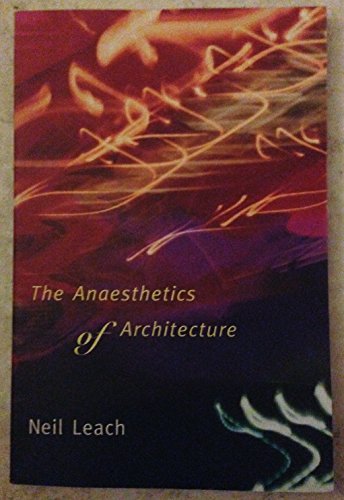anaesthetics architecture von leach neil (8 Ergebnisse)
Suchfilter
Produktart
- Alle Product Types
- Bücher (8)
- Magazine & Zeitschriften (Keine weiteren Ergebnisse entsprechen dieser Verfeinerung)
- Comics (Keine weiteren Ergebnisse entsprechen dieser Verfeinerung)
- Noten (Keine weiteren Ergebnisse entsprechen dieser Verfeinerung)
- Kunst, Grafik & Poster (Keine weiteren Ergebnisse entsprechen dieser Verfeinerung)
- Fotografien (Keine weiteren Ergebnisse entsprechen dieser Verfeinerung)
- Karten (Keine weiteren Ergebnisse entsprechen dieser Verfeinerung)
- Manuskripte & Papierantiquitäten (Keine weiteren Ergebnisse entsprechen dieser Verfeinerung)
Zustand Mehr dazu
- Neu (1)
- Wie Neu, Sehr Gut oder Gut Bis Sehr Gut (Keine weiteren Ergebnisse entsprechen dieser Verfeinerung)
- Gut oder Befriedigend (6)
- Ausreichend oder Schlecht (1)
- Wie beschrieben (Keine weiteren Ergebnisse entsprechen dieser Verfeinerung)
Einband
- alle Einbände
- Hardcover (Keine weiteren Ergebnisse entsprechen dieser Verfeinerung)
- Softcover (8)
Weitere Eigenschaften
- Erstausgabe (Keine weiteren Ergebnisse entsprechen dieser Verfeinerung)
- Signiert (Keine weiteren Ergebnisse entsprechen dieser Verfeinerung)
- Schutzumschlag (Keine weiteren Ergebnisse entsprechen dieser Verfeinerung)
- Angebotsfoto (1)
Sprache (1)
Preis
- Beliebiger Preis
- Weniger als EUR 20
- EUR 20 bis EUR 45 (Keine weiteren Ergebnisse entsprechen dieser Verfeinerung)
- Mehr als EUR 45 (Keine weiteren Ergebnisse entsprechen dieser Verfeinerung)
Gratisversand
Land des Verkäufers
Verkäuferbewertung
-
Zustand: Good. Used book that is in clean, average condition without any missing pages.
-
Zustand: Very Good. Used book that is in excellent condition. May show signs of wear or have minor defects.
-
Zustand: Good. Former library book; may include library markings. Used book that is in clean, average condition without any missing pages.
-
Paperback. Zustand: Good. No Jacket. Pages can have notes/highlighting. Spine may show signs of wear. ~ ThriftBooks: Read More, Spend Less.
-
Paperback. Zustand: Very Good. No Jacket. May have limited writing in cover pages. Pages are unmarked. ~ ThriftBooks: Read More, Spend Less.
-
EUR 3,11
EUR 6,35 für den Versand von Vereinigtes Königreich nach USAAnzahl: 1 verfügbar
In den WarenkorbPaperback. Zustand: Fair. A readable copy of the book which may include some defects such as highlighting and notes. Cover and pages may be creased and show discolouration.
-
The Anaesthetics of Architecture
Anbieter: Better World Books Ltd, Dunfermline, Vereinigtes Königreich
EUR 6,24
EUR 9,07 für den Versand von Vereinigtes Königreich nach USAAnzahl: 1 verfügbar
In den WarenkorbZustand: Good. Ships from the UK. Former library book; may include library markings. Used book that is in clean, average condition without any missing pages.
-
Soft cover. Zustand: New. 8vo (23 cm), XII, 101 pp. Publisher's laminated wrappers. "In this short, intentionally polemical book, Neil Leach draws on the ideas of philosophers and cultural theorists such as Walter Benjamin and Jean Baudrillard to develop a novel and highly incisive critique of the consequences of the growing preoccupation with images and image-making in contemporary architectural culture. The problem with this preoccupation, Leach argues, is that it can induce a sort of numbness, as the saturation of images floods the senses and obscures deeper concerns. This problem is particularly acute for a discipline such as architecture, which relies heavily on visual representation. As a result, architects can become anaesthetized to the social and political realities of everyday life. In the intoxicating world of the image, the aesthetics of architecture threaten to become the anaesthetics of architecture. In this culture of aesthetic consumption, this culture of the cocktail, meaningful discourse gives way to strategies of seduction, and architectural design is reduced to the superficial play of empty, seductive forms." (from the blurb).



